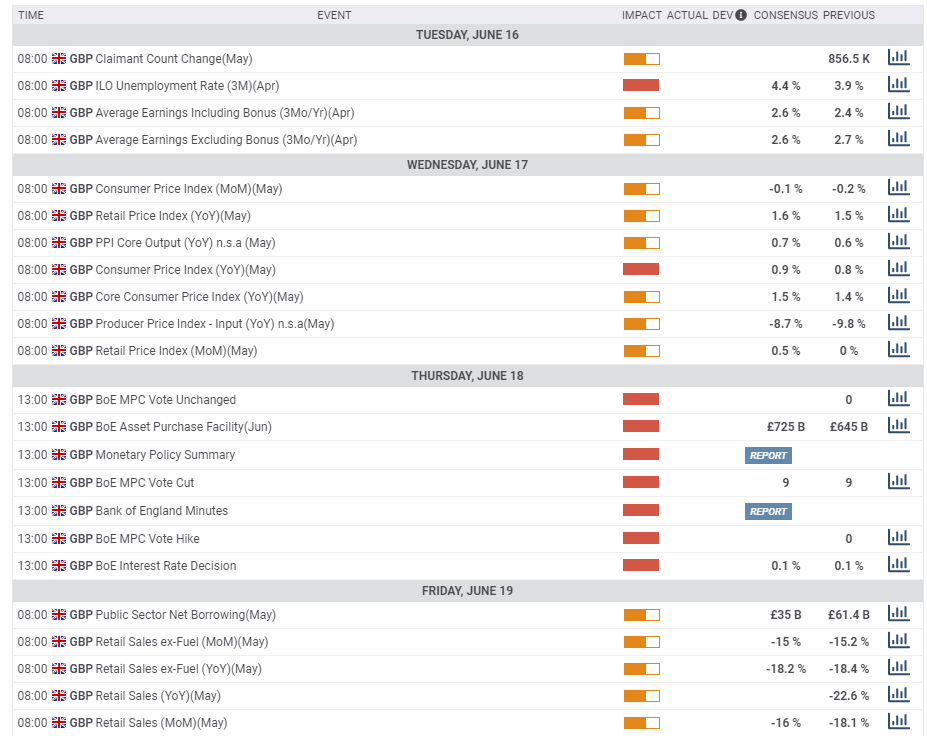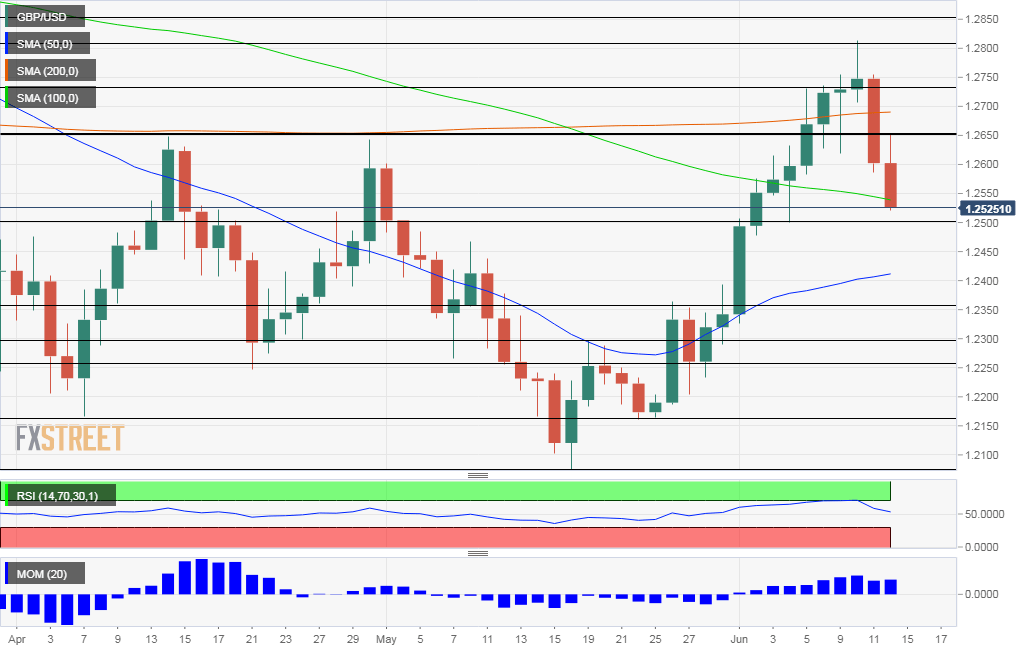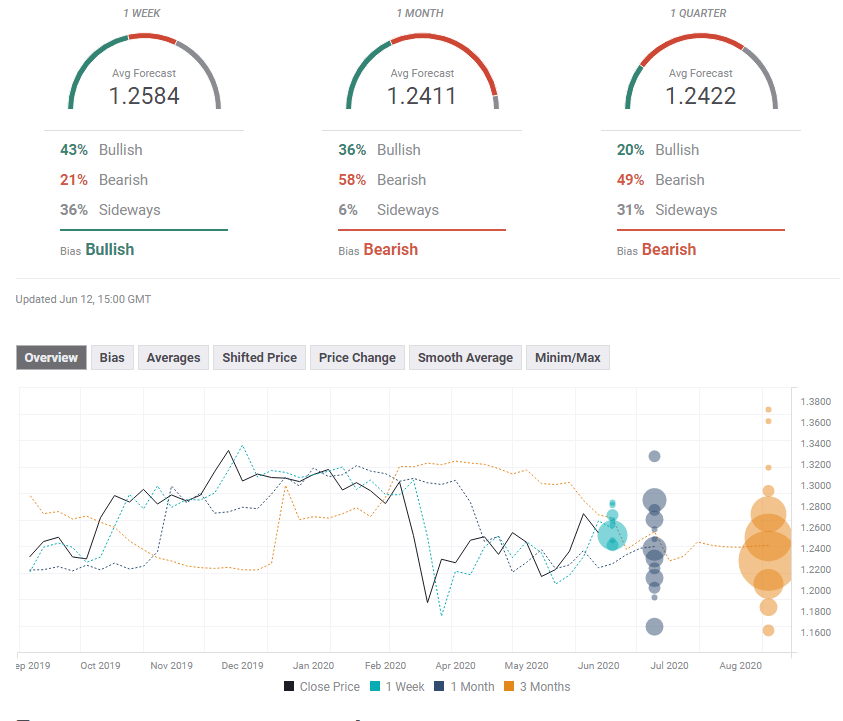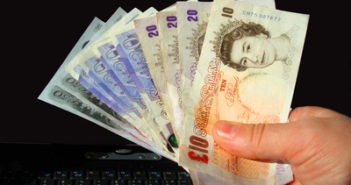Has cable begun its climbdown? The Fed’s commitment to low rates, the Brexit deadlock, and concerns about coronavirus on both sides of the pond have halted the rally. The Bank of England rate decision, top-tier UK figures, US retail sales, Brexit, and coronavirus will keep traders busy.
This week in GBP/USD: Fed fails to sustain optimism, coronavirus worries
The Federal Reserve signaled to keep interest rates at low levels for at least a couple of years and also committed to maintaining a high level of bond buying. Instead of cheering markets, investors focused on the reasons behind the move – a dire economic outlook. The Fed is pessimistic about a return to pre-pandemic output before 2022.
Jerome Powell, Chairman of the Federal Reserve, cast doubts about the bounce in May’s Non-Farm Payrolls report and stated that the bank is “not even thinking about thinking of raising rates.” The mood slipped and the safe-haven dollar came in demand once again. For GBP/USD, that meant a fall from above 1.28 to below 1.27.
Markets are also concerned about a second coronavirus wave in the US. Cases are rising in California, Texas, and Florida after the states opened up in May. Hospitalizations are also increasing.
COVID-19 remains a concern also in the UK, where the curve is flattening at a frustrating rate and the government is only taking baby steps to reopen the economy. Prime Minister Boris Johnson has come under harsh criticism from within and from without, about his handling of the disease. The PM’s falling approval rating may cause weaker compliance with the rules.
UK Gross Domestic Product plunged by over 20% in April, worse than expected in the first full month of lockdown. While that only had a temporary adverse effect on sterling, forecasts will probably be revised down.
Brexit talks remain deadlocked and also cause some sterling suffering. Michel Barnier, Chief EU Negotiator, said Britain wants the privileges of a member state without the obligations, sharpening his criticism. Some hope that intervention by leaders could result in a breakthrough.
Protests against racial discrimination have engulfed the UK, following those in the US. That may also increase the spread of the illness and adds to pressure on the government. Returning back to America,
President Donald Trump has also seen his net approval rating tumble to the worst so far this year, amid his handling of the crisis. Uncertainty about the elections is also a risk factor.
UK events: BOE stands out
It is still to be seen if the spark of George Floyd’s death in Minneapolis will continue spreading protests in Manchester and other cities in the UK. Brits’ reopening of the colonial past may cause political stability and weigh on the pound.
COVID-19 infections are set to fall – especially on Monday, after the weekend – but the pace of flattening is critical to the next stages in lifting the lockdown.
The economic calendar is also set to keep traders busy. The jobs report will likely show an increase in the unemployment rate, yet economists expect it to remain below 5%. That is due to the rolling three-month average and to the government’s furlough scheme.
The Claimant Count Change surged by 856,500 in April and probably advanced at a high rate also now. The labor market is far from recovery while restrictions are in place.
Inflation figures for May are projected to show another modest decline – and to remain below the Bank of England’s target of 2% in any case. Consumer prices will likely be shrugged off by markets.
The main event of the week is Thursday’s rate decision. Andrew Bailey, Governor of the Bank of England, said that negative rates are “under active consideration” – opening the door to sub-zeros rates that could weigh on sterling.
Several of his colleagues at the BOE, such as Andy Haldane and Silvana Terenyero also seemed to warm up to the idea. However, such a drastic step – that would weigh heavily on the pound – will likely wait. The eurozone’s experience with negative rates failed to trigger robust growth.
There is a higher likelihood that the “Old Lady” will opt to expand its Quantitative Easing program, currently worth £645 billion. The calendar shows an increase of £80 billion to a total of £725 billion but larger sums cannot be ruled out.
While printing more money used to be seen as devaluation and hurt the currency, markets have been cheering such moves in the coronavirus crisis. Funds from the central bank lower the government’s borrowing costs, allowing a quicker deployment of stimulus and a faster recovery.
A large sum would boost sterling while a smaller one would weigh on it. The BOE also publishes its meeting minutes, providing more information about it sees the economy at the current juncture. Similar to the Fed, optimism would support sterling and pessimism would weigh on it.
Last but not least, retail sales figures for May – the second full month of lockdown – are predicted to show a plunge of around 15%, similar to the plummet in April. Here, there is room for a positive surprise, as consumers may have maintained previous expenditure levels rather than further reducing them substantially.
Here is the list of UK events from the FXStreet calendar:

US events: Retail sales and second wave fears
Protests against racial discrimination have somewhat quieted down after two weeks but may wake up over the weekend. Investors are worried only as long as it impacts the elections.
The worst fear for investors is a clean sweep by Democrats, allowing them to re-regulate Wall Street. While President Donald Trump is trailing rival Joe Biden, the Senate is still seen as a safe Republican.
Will the US coronavirus curve rise again? Deaths from the disease are falling but cases are refusing to let go. Reports from major states and the broader trend will be eyed. If California, Texas, or Florida reinstate stay-at-home rules, it would likely send shivers down investors’ spines. That may wait for longer.
Most states loosened the lockdown during May, and that likely contributed to rising cases. Did that reopening also boost spending? Retail sales figures for the previous month will provide some answers.
After falling by 16.4% in April, a substantial bounce worth 7% is on the cards for May. The Control Group – “core of the core” – carries expectations for an increase of 3.8%. There are reasons to worry that the optimism may be premature. Starbucks showed that its sales remained depressed last month.
Fed Chair Powell will have another chance to move markets during two days of testimonies on Capitol Hill. Answering lawmakers’ questions, he may shed more light on how he sees the economy, potentially reacting to consumption data. Gloomy forecasts may weigh on markets while painting a rosier picture could send them higher.
Jobless claims statistics for the week ending June 12 – the one when Non-Farm Payrolls surveys are held – will likely show another increase of over a million applications. Continuing claims are also eyed to see how many people remained on the dole.
Housing figures and the Philly Fed Manufacturing Index carry expectations to remain at subdued levels.
Here the upcoming top US events this week:

GBP/USD Technical Analysis
Pound/dollar failed to hold onto the 200-day Simple Moving Average but trades above the 100-day SMA. Momentum remains to the upside while the Relative Strength Index has dropped below 70 – exiting overbought conditions.
Overall, bulls are in the lead.
The former double-top of 1.2645 remains a battle line. It is followed by 1.27, which is a round level and also where the 200-day SMA is about to hit the price. June’s high at 1.2805 is the next level to watch.
Support awaits at 1.2545, a low point after the surge that also converges with the 100-day SMA. Next, the 50-day SMA awaits at 1.2410, and it is followed by the late May high of 1.2360 and then by 1.23.

GBP/USD Sentiment
The tables may have turned against the pound amid the government’s worse standing, and in favor of the dollar – as the mood worsens.
The FXStreet Forecast Poll is showing that investors see a minor recovery but later a fall below 1.25. While the short-term target has been downgraded, the medium and long-term goals are little changed.

Related Reads
Get the 5 most predictable currency pairs
